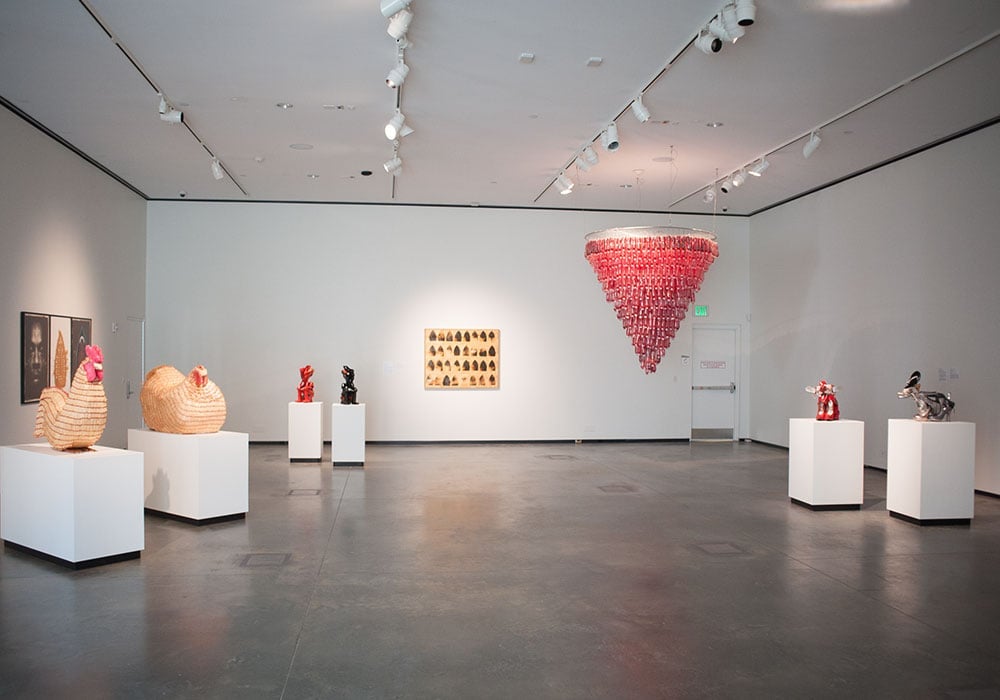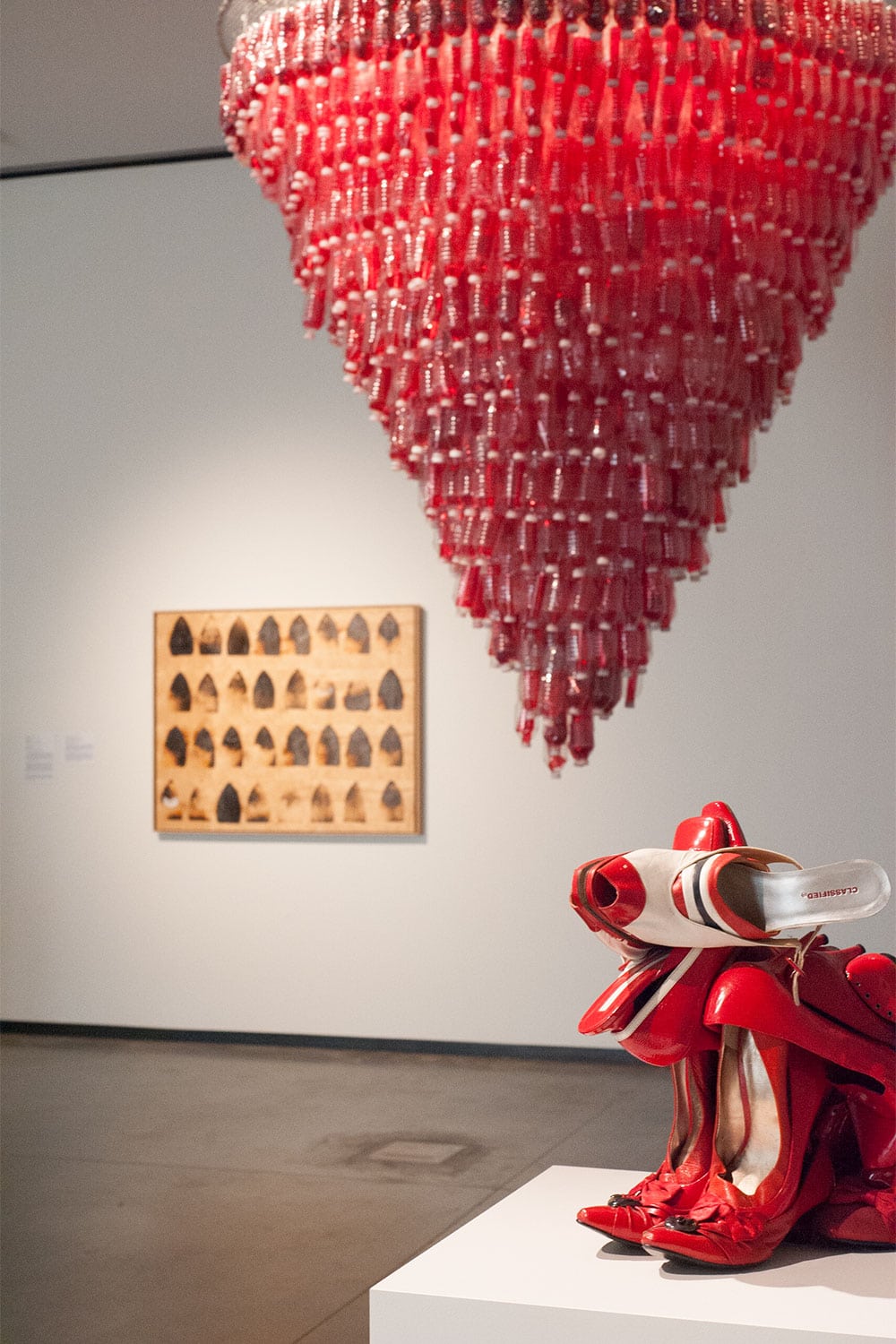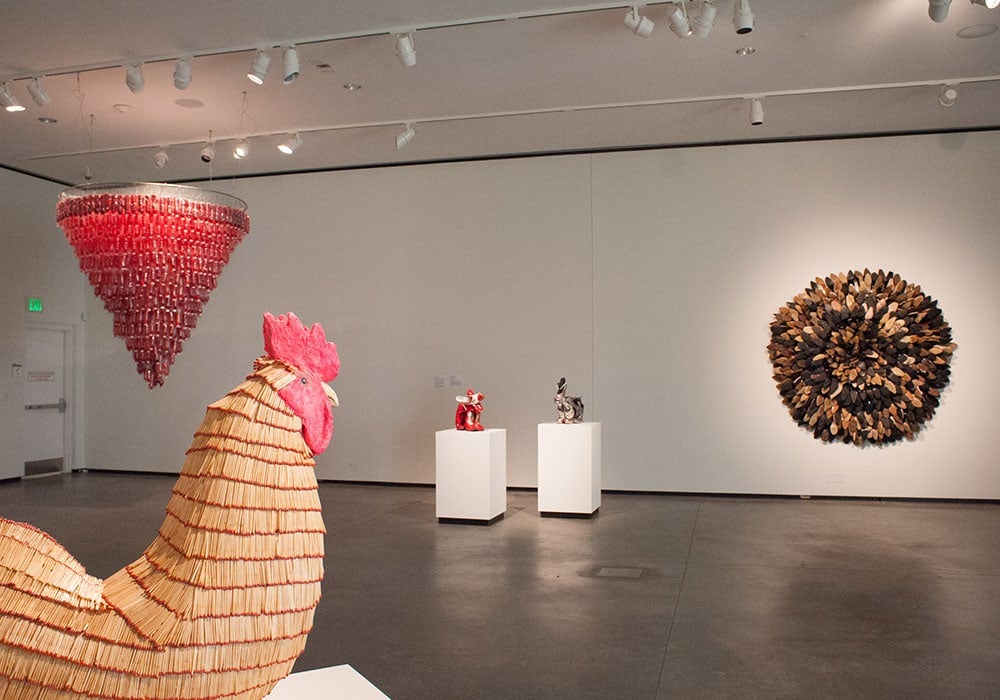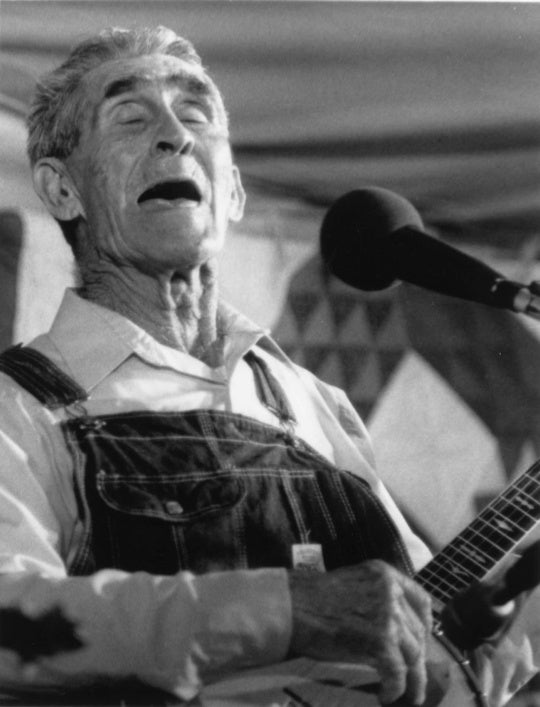
Willie Cole is no stranger to Birmingham audiences. His work was the subject of a 2007 touring retrospective and a 2013 solo exhibition at beta pictoris gallery, so one might wonder what revelations could possibly appear in “Willie Cole: Transformations” at the Abroms-Engel Institute for the Visual Arts. Fortunately, the exhibition was able to quickly dispel my concerns. Cole, who is based in New Jersey, has always been multifaceted, and his works operate on so many levels that they function simultaneously as aesthetic, cultural, and critical objects.
The works in the show spanned the past 20 years. Curated by AEIVA’s director Lisa Tamiris-Becker, “Transformations” was as much an archaeology as it is a chronology. This was an opportunity to excavate many surprising pieces held in Birmingham collections, as major local collectors have always focused on Cole’s works. What resulted was a rich selection that the public seldom sees. Case in point were the two exceptional matchstick sculptures, Malcolm’s Chicken I and Malcolm’s Chicken III, that reference the entire history of tramp art at the same time that they recall Malcolm X’s statement concerning “chickens coming home to roost.” Given the social, cultural, and political issues currently confronting America, there could be fewer more poignant or more prescient works to consider right now.

Also particularly strong are Cole’s shoe sculptures, some sewn, others cast and patinated. The sewn sculptures Pink Leather Venus and Black Leather Venus highlight Cole’s ability to take everyday objects and caress them into exquisite forms, turning shoes into pieces that seem as if they are fashioned from wood. Cole’s sculptures always exist at the intersections of history and culture, combining fetish, object, and complex African history with disposable, American mass-produced culture.
Cole recently took his explorations of form and shape with shoes even further, transforming them into bronze in a series begun in 2012. The Worrier works are phantasmagorical simulacra, the bronze shoes patinated to appear like leather, the disposed object transformed into the immutable, solid material then made to look fragile again.
Tji Wara Mother and Child #1 (2008) is constructed from bicycle parts. The exhibition text described its relationship to Bamana sculpture, and also linked it to Duchamp’s Bicycle Wheel, an obvious predecessor. One might argue that its more closely related antecedent, through which it would engage the West’s obsessions with both anthropology and bricolage more directly, would be Picasso’s Bull’s Head.
Red Spirit Light, a massive chandelier made of salvaged plastic bottles, was more problematic. The challenge here is that, in some senses, both the form and the materiality of the plastic bottle are so commonplace in our reuse and recycle culture that it is difficult for it to transcend that association, even with an extensive and spiritually grounded explanation. Size and scale situate the work as monumental, but the more intimate elements that motivated the piece are somehow elusive without Cole’s explanation.
More powerful is the site-specific shoe rosette Sole Flower (2015), which was constructed specifically for the exhibition. One might note here that this work in fact created a dialogue with the many other rosettes on the UAB campus, including the stained glass window of the Spencer Honors House across the street and the cast iron “Rosette Bobbin” sculpture found adjacent to that building.

The most difficult aspect of the exhibition arose not from the objects but from their context. Cole’s two firehose works, Civil Constrictor and Birmingham Rattlesnake were installed in an adjacent gallery, commingling with a photographic exhibition that combines the works of Civil Rights photographers James “Spider” Martin and Peter Magubane. In a sense, shoehorning the firehose works into this gallery serves merely to limit their interpretations. For many viewers, it made their physical function more significant than their artistic form. In these works, Cole’s poeticism is the most effective in his capacity to juxtapose text and object. Experiencing this requires the active participation of the viewer, who must engage with both the text and the object label. It requires the participation of the viewer in the act of naming. Now, back among the images of American and African civil rights struggles, the capacity for this participatory engagement was diminished. The firehose simply became a tool of repression rather than a tool of expression. Had these been sited back among Cole’s other pieces, the rupture between object and image may have made the jolt of recognition all the more jarring, and the viewer would have been left to make his or her own connections.
In the end, “Willie Cole: Transformations” was an engaging experience. The exhibition highlighted a selection of his developments and interests over the past two decades. The show was large enough to touch on these, yet not large enough to be encyclopedic. It focused on local works in part to enhance these connections with collectors, and it brought examples of the breadth of Cole’s never-ending creativity to the fore.




